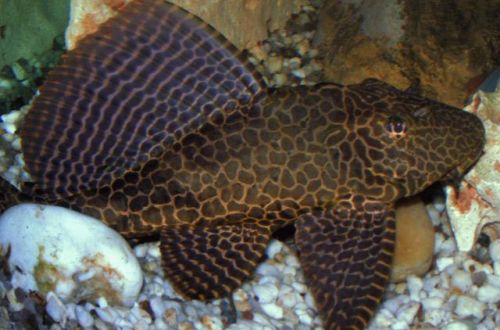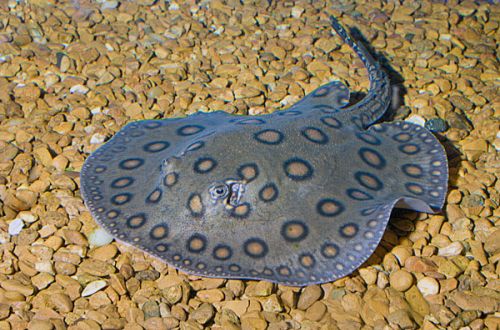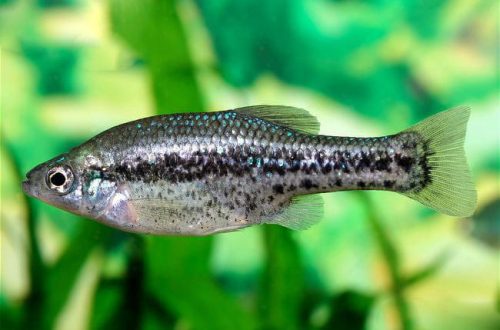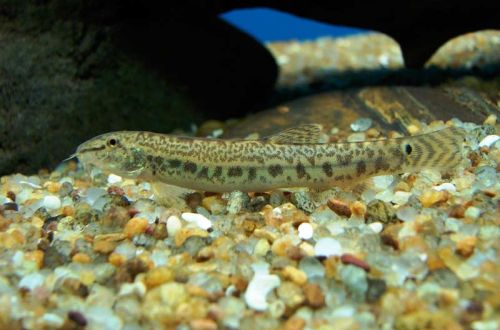
Brocade som
Leopard or Brocade catfish (or Pterik in colloquial language), the scientific name Pterygoplichthys gibbiceps, belongs to the Loricariidae family. It is considered one of the most popular and sought-after species, largely due to one important feature – the catfish effectively destroys algae in the aquarium.

Habitat
Leopard or Brocade catfish was first described in 1854 by two researchers at once and received two names, respectively. Currently, two equally common names can be found in the scientific literature: Pterygoplichthys gibbiceps and Glyptoperichthys gibbiceps. Catfish lives in inland river systems in most parts of South America, in particular, it is widely distributed throughout Peru and the Brazilian Amazon.
Description
Pterik is quite large, it can grow up to 50 cm in length. Its elongated body is covered with flat bone plates, high-set small eyes are noticeable on a large head. The fish is distinguished by a high dorsal fin, which can reach more than 5 cm in height and has at least 10 rays. The pectoral fins are also impressive in size and somewhat resemble wings. The color of the fish is dark brown, dotted with many irregularly shaped spots, like the skin of a leopard.
Food
Although this type of catfish is omnivorous, plant foods should still be the basis of their diet. Therefore, the diet must necessarily include sinking food with additives, such as spinach, zucchini, lettuce, peas, etc., which should be fixed at the bottom of the aquarium, pressing down, for example, with a stone. Do not neglect vegetable flakes. Once a week, you can serve live food – brine shrimp, worms, small crustaceans, insect larvae. It is advisable to feed in the evening before turning off the light.
The catfish is known as a lover of algae, it is able to clean the entire aquarium in a short time without damaging a single plant. Many aquarists acquire this type of catfish just to fight algae, not suspecting what kind of large fish they bought, since catfish are represented in the retail network as fry. In the future, as it grows, it may become crowded in a small aquarium.
Maintenance and care
The chemical composition of water is not as important for catfish as its quality. Good filtration and regular water changes (10 – 15% every two weeks) will be the key to successful keeping. The large size of the fish requires a spacious aquarium with a volume of at least 380 liters. In the design, a prerequisite is the presence of wood, which the catfish periodically “chews”, so it receives the trace elements it needs for healthy digestion, in addition, algae colonies grow well on it. Wood (driftwood or woven roots) also serves as shelter during daylight hours. Preference should be given to strong large plants with a powerful root system, only it will withstand the onslaught of catfish burrowing in the ground, in addition, delicate plants can become food.
Social behavior
The leopard catfish is valued for its peaceful disposition and ability to rid an aquarium of algae. Fish will fit in almost any community, even for small fish, all thanks to their vegetarianism. Aggressive behavior has not been noted in relation to other species, however, there is an intraspecific struggle for territory and competition for food, but only for newly introduced fish, if the catfish originally lived together, there are no problems.
Breeding / breeding
Only an experienced breeder is able to distinguish a male from a female, outwardly they are almost identical. In the wild, leopard catfish spawn along steep, silty shores in deep mud burrows, so they are extremely reluctant to breed in home aquaria. For commercial purposes, they are bred in large fish ponds as similar to their natural habitat as possible.
Diseases
The fish is very hardy and, under favorable conditions, is practically not susceptible to disease, but if the immune system is weakened, the body becomes susceptible to the same diseases as other tropical fish. More information about diseases can be found in the section “Diseases of aquarium fish”.





